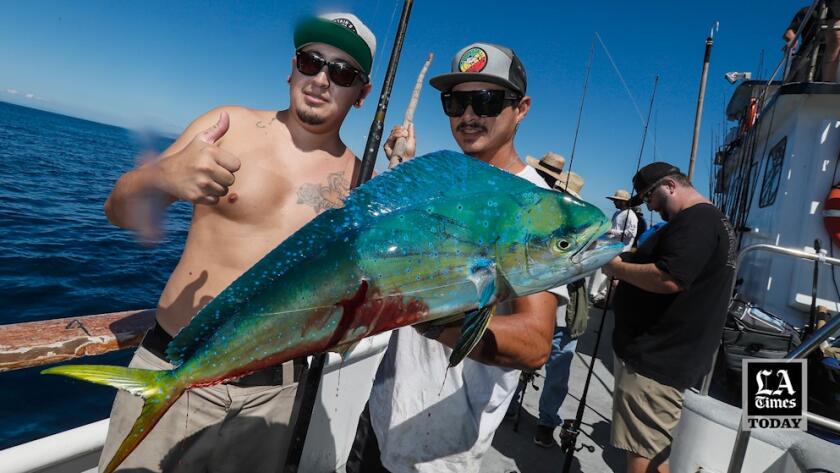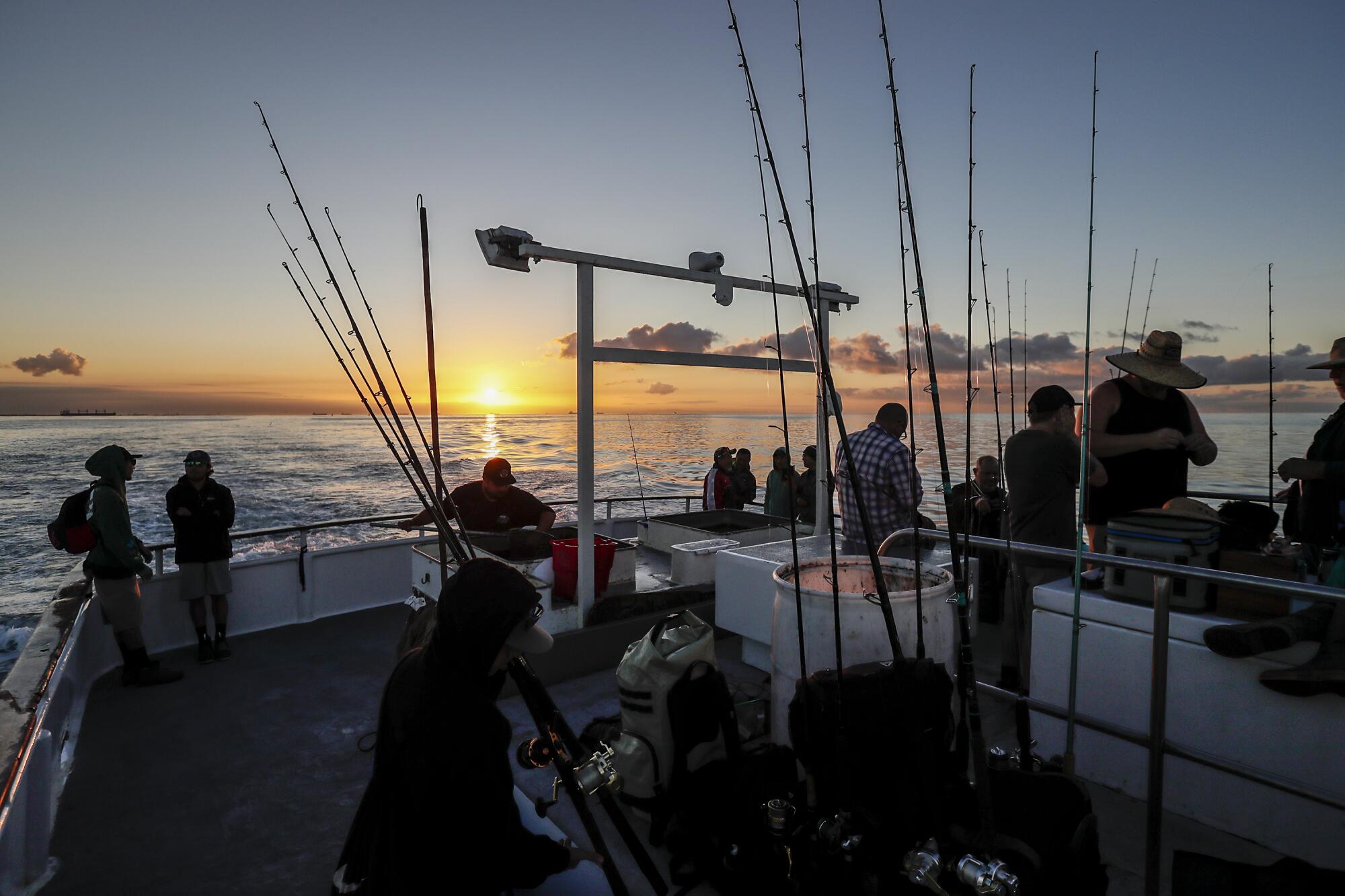
The waning moon glimmered in the shallows of Rainbow Harbor, seagulls still blinking sleep from their eyes as the anglers huddled at the edge of the pier.
Some had followed friendsâ fish stories to the small Long Beach landing. Others were lured there by Instagram.
All were chasing the dorado â better known by its Hawaiian name, mahi-mahi â a luminary of the sport fishing world whose sudden appearance last month off the Los Angeles coast has sparked a feeding frenzy among local anglers.
âIâve been fishing since I could hold a fishing pole, and I caught my first dorado a month ago,â said Randy Roa, 30, of Long Beach, who wears his passion for the sport inked on his skin, from the bass on his thumb to the hook in his neck. âNormally theyâre not up here. Until theyâre gone, itâs a sprint.â
With the athletic prowess of a dolphin, the iridescent scales of a mermaid and the snub-nosed visage of a bulldog, dorado are among the most striking fish in the Pacific, and some of the most challenging to land. Mahi-mahi means âvery strong,â and the fish are prized as much for their tasty flesh as for their acrobatics on the line.
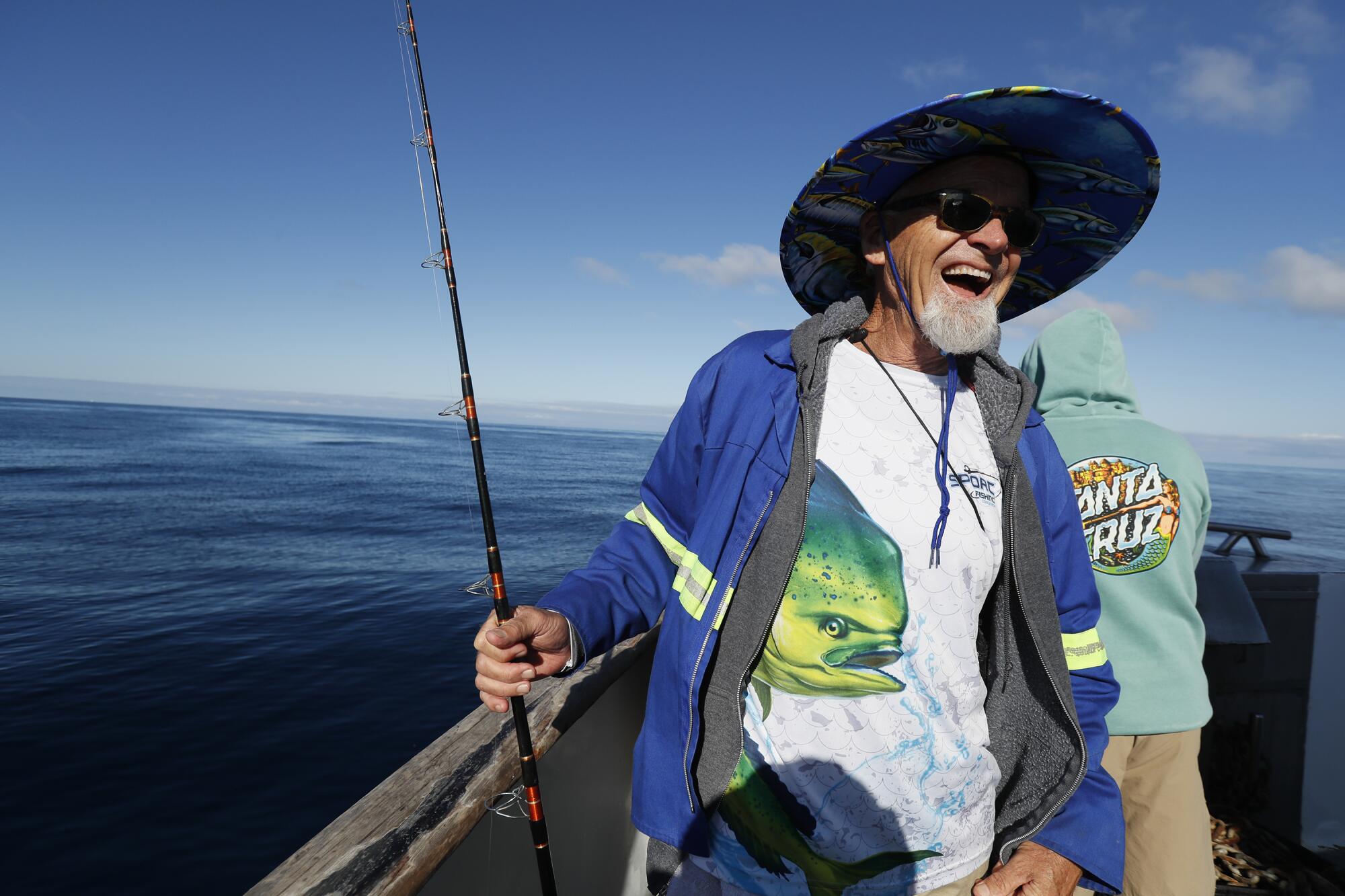
âThey go crazy,â said 20-year-old Jalen Moore, a barber from Bellflower. âOnce you start reeling, they jump up out of the water. They give a strong fight.â
Though common off the coast of Baja California, the tropical predators rarely venture north of the U.S.-Mexico border. When they do, itâs typically to follow warm water left behind by El NiĂąo.
But the Pacific has seen two winters of La NiĂąa, when cold waters reign. Thatâs been a boon for L.A.âs anchovy, one of the âforage fishâ that larger species such as dorado rely on, experts say.
âAnchovy are doing really well, and I think thatâs whatâs driving a lot of the large pelagic fishes,â explained John Hyde, a biologist with the Southwest Fisheries Science Center in La Jolla, referring to the category of deep-sea fish that live near the surface of the water.
As the summerâs heat waves warmed local waters â abetted partly by climate change â yellowtail, barracuda and dorado swam up to catch the bait.
Now, barbers, nurses and steelworkers are giving chase.
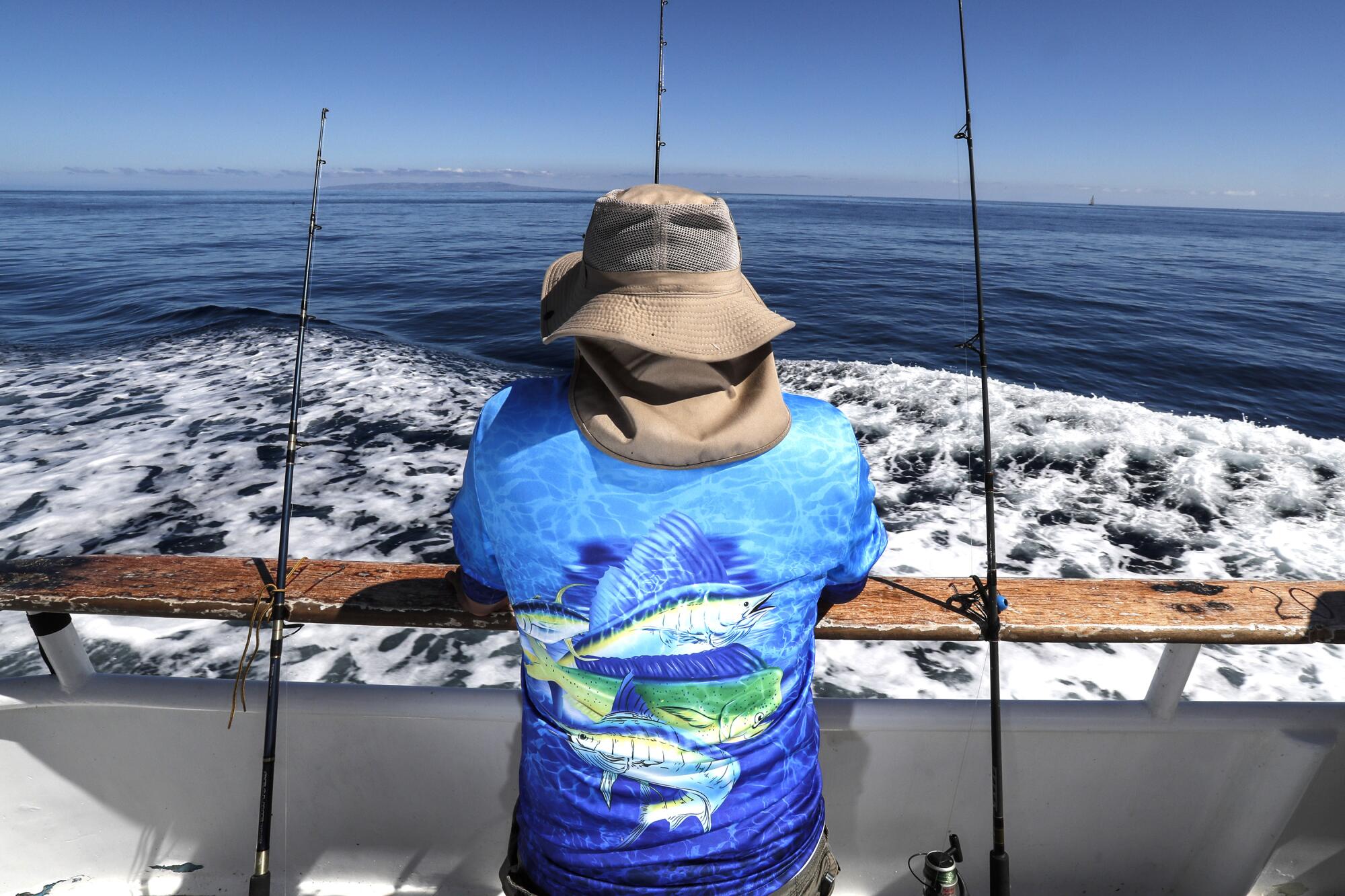
âThis is a monumental moment, because usually people have to travel very far and spend a lot of money to target these fish,â said Marcus Fain, a scientific aide with the California Department of Fish and Wildlife who has been cataloguing the phenomenon as part of his work on the California Recreational Fisheries Survey. âNow thereâs a huge opportunity for local fishermen. Itâs pretty much unheard of.â
Overnight, what would normally be a multiday, cross-border venture became an $80 day trip with a $3 parking fee. By 5:45 Monday morning, more than 40 everyday Angelenos were lined up to board the Enterprise, one of scores of deep-sea fishing boats chasing dorado full time.
Just days earlier, the same boat brought in 199 dorado. Two weeks before that, it snared almost 250.
âWhen I came out before, there were probably 100 boats within casting range,â said Daniel Dahlin, 27, a fishing bait-maker from Redondo Beach.
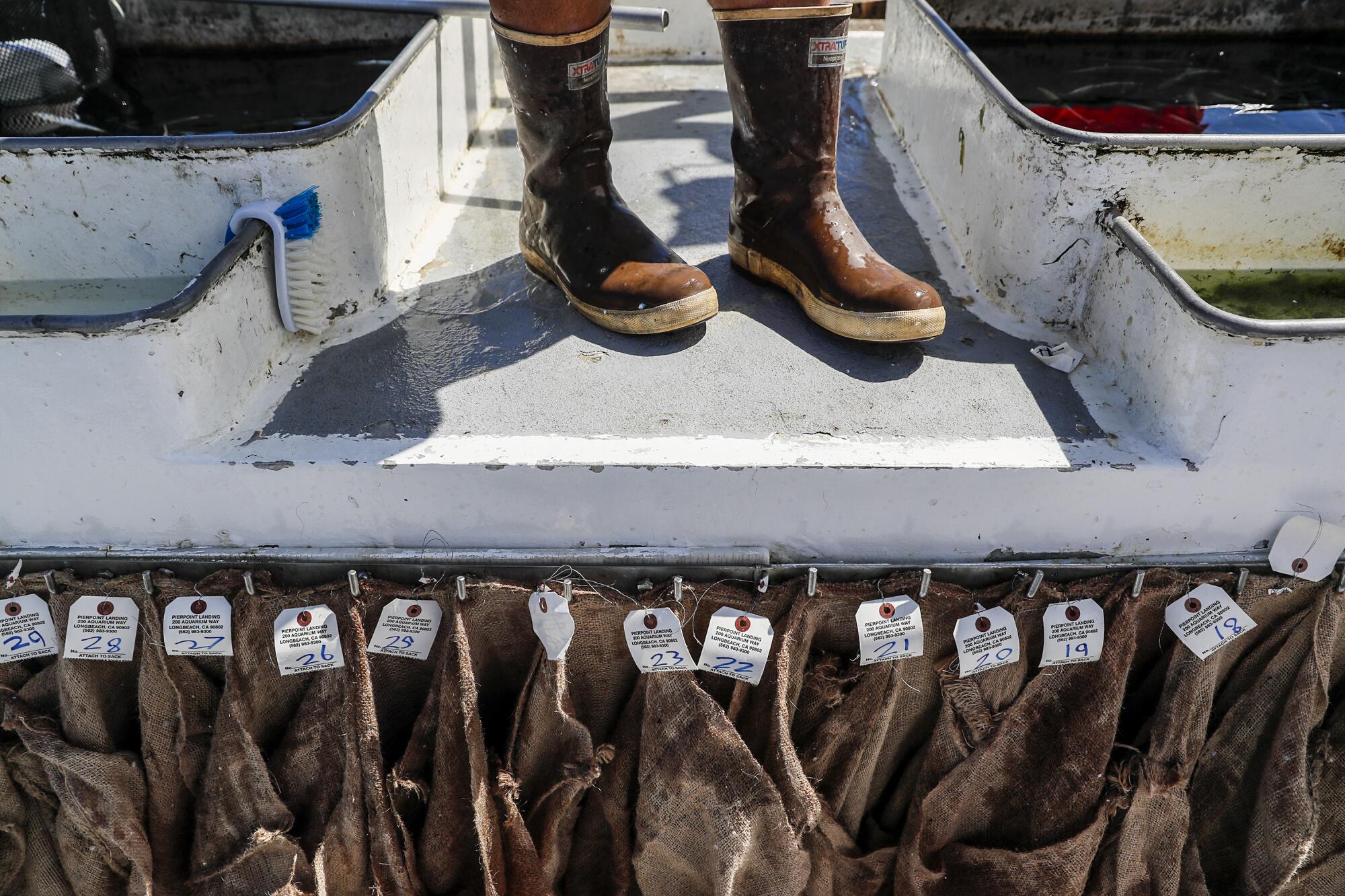
But a fishermanâs luck is notoriously fickle.
Despite her sudden abundance, the Pacificâs most coveted beauty is very hard to catch.
::
âIf youâve ever caught a dorado, you know they fight a lot,â 45-year-old Diana Vega explained as she strung her pole in the blue light of dawn. âYou have to fight back. Itâs exhilarating, even though itâs just a short amount of time.â
It was just after 6 a.m., and the Enterprise was speeding past container ships on its way out of Long Beach. The water was quiet and tranquil, the smell of bait fish and salt air overwhelmed by the scent of bacon frying in the galley.
âI grew up fishing because my father wanted only boys,â Vega added. âBut my son loves deep sea fishing. Heâs totally obsessed. If he could fish every day, he would.â
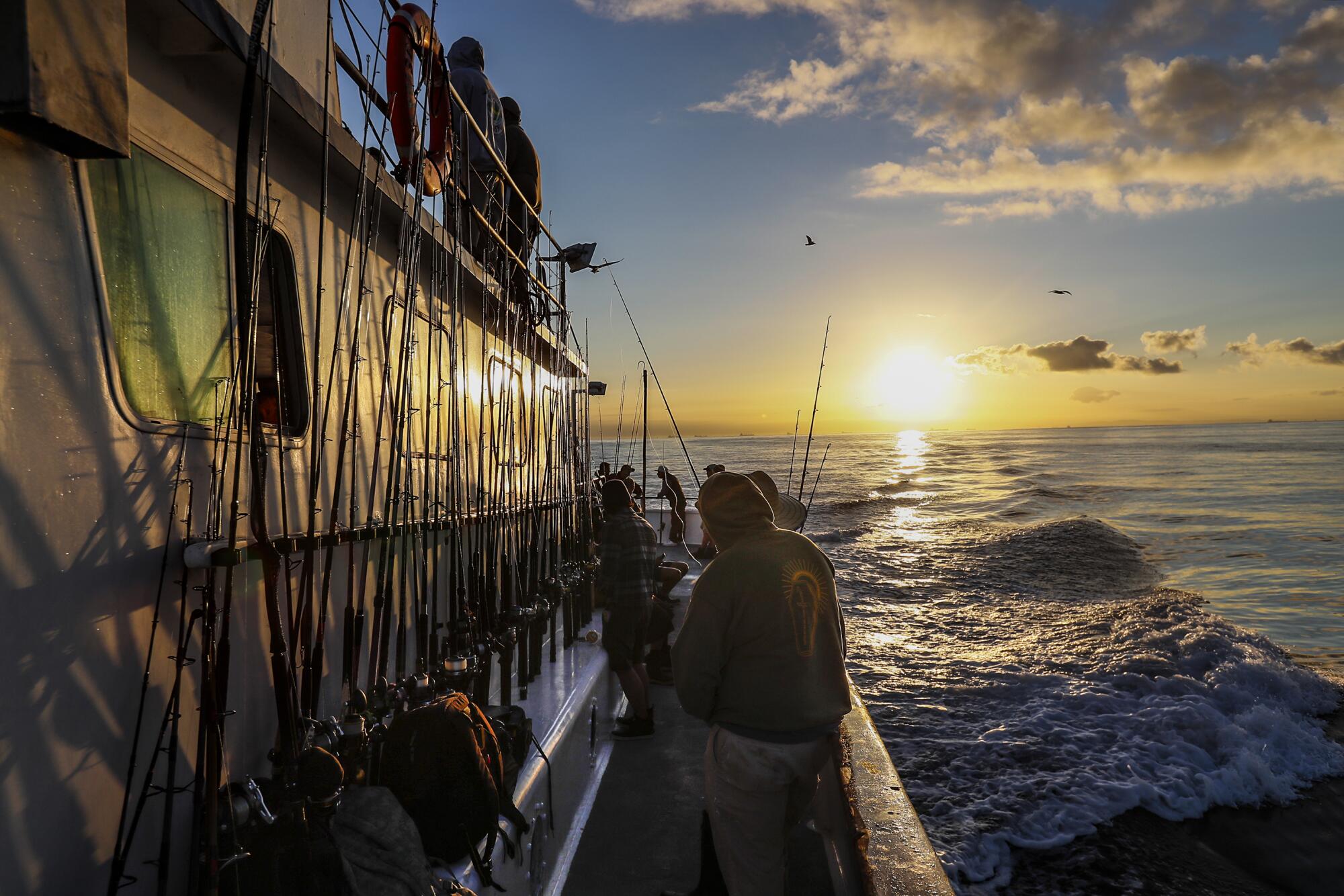
The mood was sleepy but buoyant as the ship made its way through the dark azure water, which plunges some 2,000 feet. Most, like Vegaâs 18-year-old son Preston Tran, were asleep. Others watched the sunrise in silence.
A garbled announcement from the cockpit warned of cooling weather and âtough fishingâ over the last two days.
But few were awake to hear it, and the rest were too busy dreaming of dorado to heed.
âJust the way they look, theyâre very beautiful, and their colors are striking,â mused Alex Rodriguez, 23. âAnd they taste pretty good too.â
âTheyâre really pretty,â 23-year-old Andrew Martinez agreed. âTheyâre green and blue and out of this world. The colors on them are one of a kind.â
Meanwhile, in the cockpit, all eyes were trained on the horizon. Crews use sonar to triangulate schools of game fish, trading tips and sightings over the radio. But most of the time, theyâre watching the water.
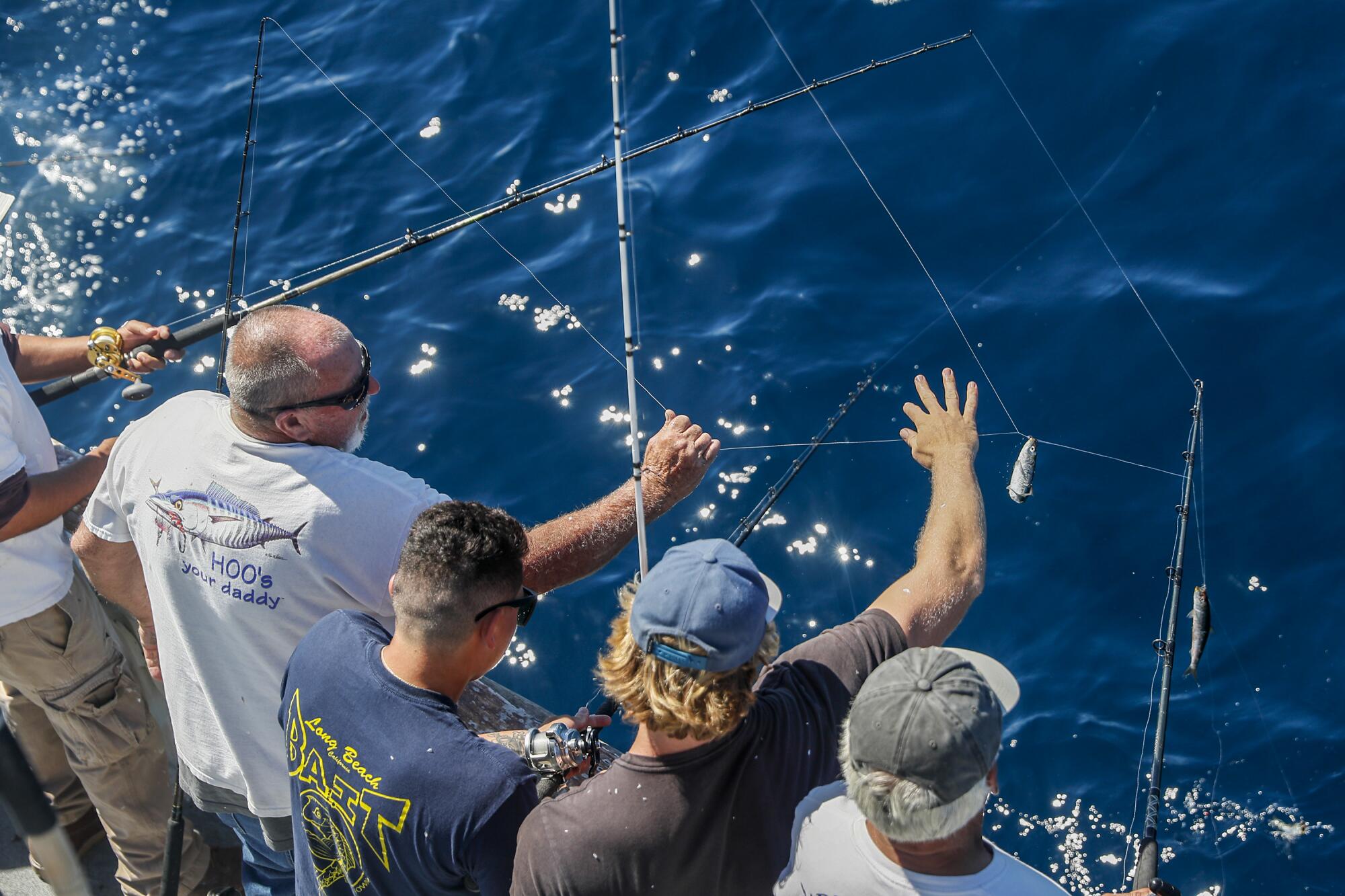
âThis style of fishing is going from [kelp] paddy to [kelp] paddy, looking for schools,â said Dahlin, the bait-maker. âWhen you see gulls or pelicans diving, that tends to mean bait. Where thereâs bait there tend to be game fish. A lot of it is cat and mouse.â
The Enterprise had been meandering after such signs for close to an hour when a pod of dolphins appeared in the distance. Radar showed there were yellowfin tuna just beneath them.
The ship made a hard turn to starboard. Anglers ran for their rods. A dozen dolphins leaped and spun alongside the boat as Capt. Sean Rubino â known to everyone as Bobby Hill for the cartoon character he resembles â shambled down to chum the water.
But the excitement was short lived. The tuna werenât biting, and the mahi-mahi were nowhere to be found.
By 9:45 a.m., the boat had made three fruitless stops with nothing to show but a light dusting of sardine scales.
The crew decided they would head for Catalina Island, where the anglers could land bass instead.
âWind âem up!â the captain called over the loudspeaker.
::
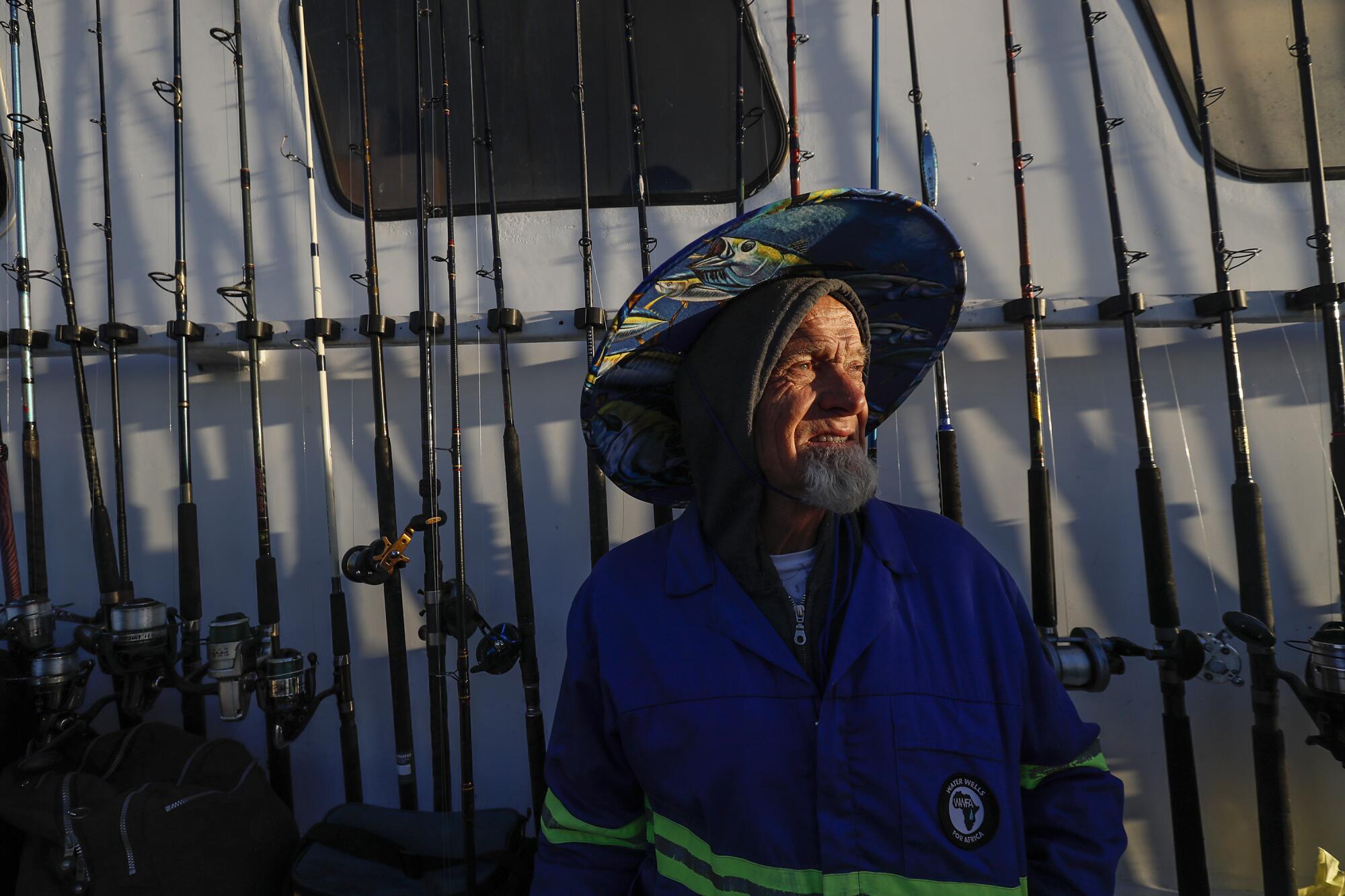
Most of sport fishing is not fishing.
There are exceptions, of course: abalone diving, fly fishing, the salmon run.
But for most anglers, fishing is 15% casting and 85% chitchat and Dramamine cat naps. On the hunt for dorado, stops can be few and far between.
âItâs fun and relaxing on the water â look how calm it is,â said Fred Jackson, a steelworker, who left his home in Corona at 3 a.m. to catch Mondayâs boat. âA bad day of fishing is still better than a good day of work.â
Still, by 11 a.m., passengers on the Enterprise were growing restless.
âThey need sonar,â groused a blond 20-something with a broad surfer accent.
âFishing is just wasting money and getting sunburnt,â his companion replied.
Even Fain, the Fish and Wildlife worker, was losing confidence.
âThis is the first time in months I havenât seen any,â he said.
Worse, by noon the bass off Catalina Island had turned shy. Bobby Hill hurled sardines overhead with the practiced arm of a softball pitcher, their silver scales clinging to hair and arms and T-shirts as the anglers crowded the stern of the boat.
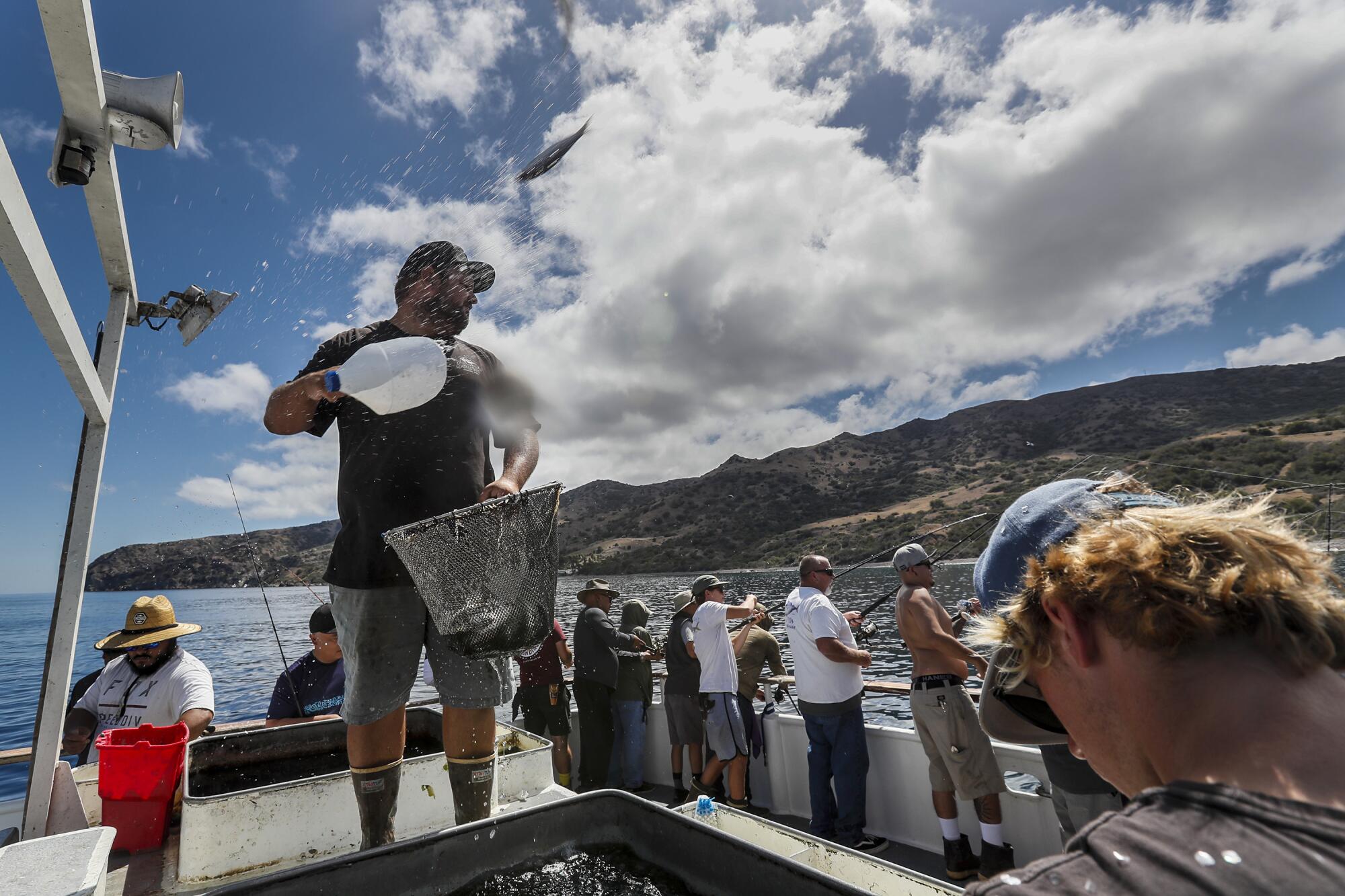
Yet no sooner did the bait hit the water than the islandâs pinniped denizens gobbled them up.
âSea lion â theyâre our worst enemy,â grumbled Capt. Mitch Christensen. âThey scare the fish and steal the bait.â
For the past hour, he and Easton Ito, 27, had been working the radio for a lead on the dorado. The prospects were dim. But if they planned to chase the glittering predator, they would have to do it soon.
The sea lion barked for more chum.
::
It was 1 p.m. and the galley was doing a brisk business in Coors Light and despair. In another 90 minutes, the Enterprise would turn back to shore. Most anglers had long since abandoned any hope of catching a dorado.
But the crew was steadfast.
Christensen steered the ship, his stomach turning the wheel, his binoculars pressed to the glass of the cockpit. Rubino and Ito took turns on the radio.
âItâs a little slower, but you have to look for [dorado],â said Roa, whoâd stripped off his shirt in the midday heat. âIâve been up there with [the crew] and thatâs all weâre doing â trying to find them.â
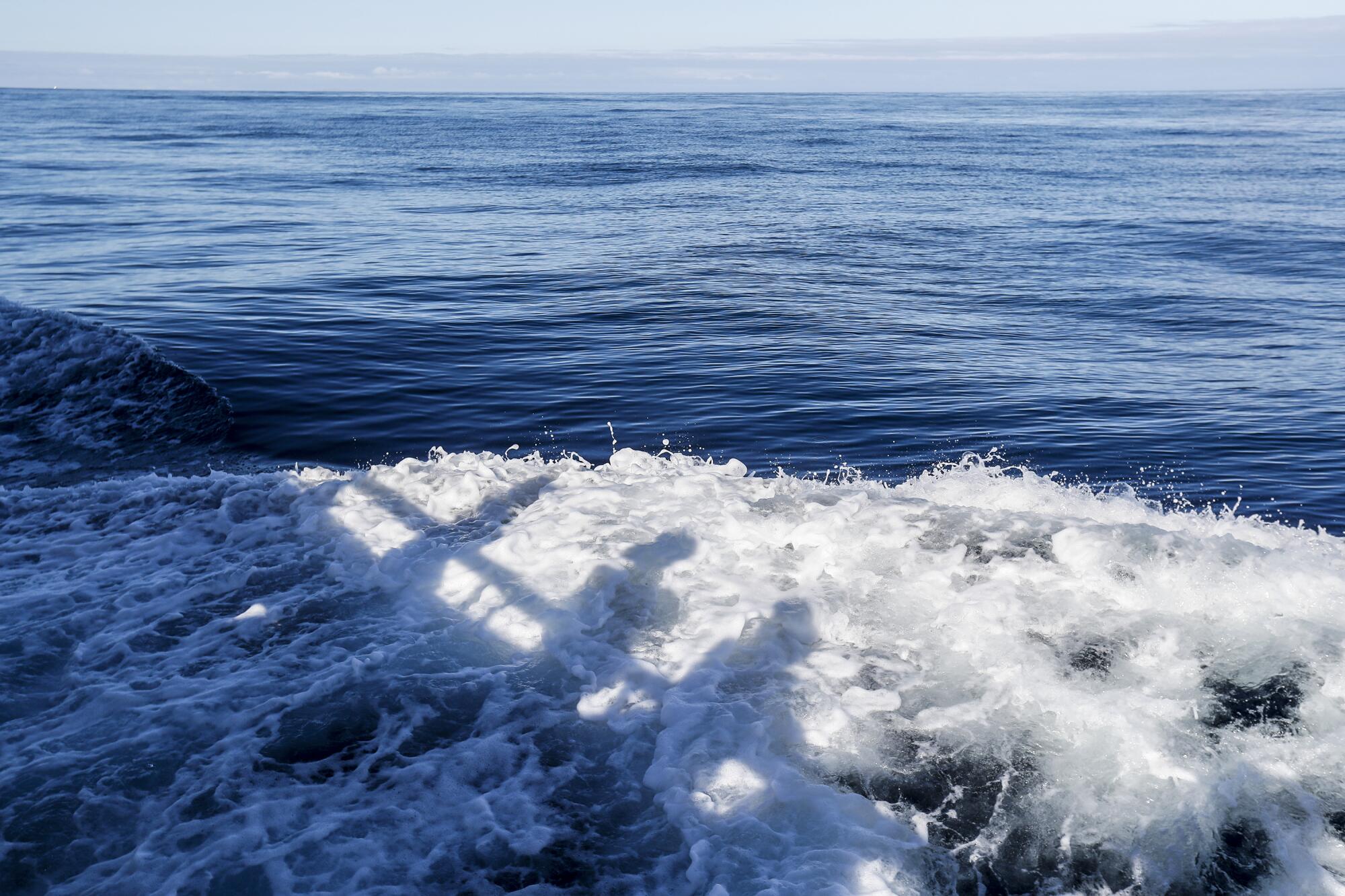
Suddenly, in the distance, a ray of sunlight seemed to leap out of the water.
âWe got a pack of dorado!â Christensen called over the loudspeaker. âLetâs hope they want to bite!â
The anglers rushed for their rods, elbowing one another for position. Bobby Hill hustled down to man the bait barrels. Marcus Fain grabbed his clipboard.
Only Fred Jackson was calm. The steelworker sat with his arms crossed, waiting to see what would happen.
In the water, dorado shimmered like a mirage, their aqua and chartreuse scales mimicking sunlight on the waves. Then, half a dozen passengers were being dragged around the boat by their reels.
âFollow your lines!â Ito shouted, as Fain ran to guide an angler around his fellow fishermen. Lines tangled into one another, catching shoulders and sunglasses and the buttons on top of baseball caps. As fast as fishermen hooked them, the dorado broke loose.
âThat was a big bull that came up right next to the boat,â Fain said breathlessly, as he gestured into the melee. âThese people are getting bit and donât even realize it. These fish are mean.â
âHot rail, hot rail!â Roa shouted from the lower deck of the boat. Ito rushed in with the gaff, helping to clear his way through the crowd. When they wrestled the 10-pound female onto the deck, the boat burst into cheers.
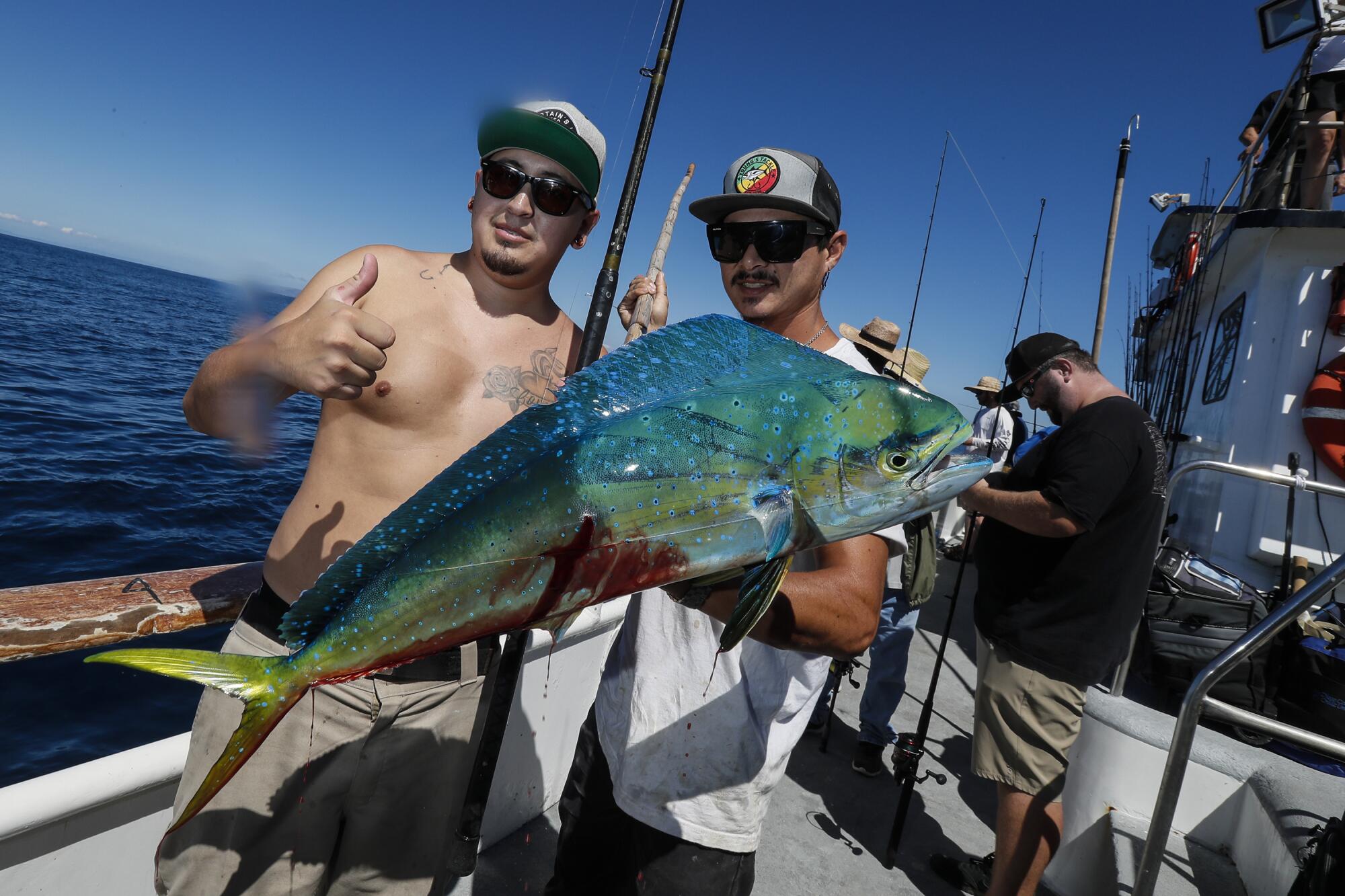
âThe adrenaline you get when you hook that fish â itâs like a football player who scores a touchdown,â Roa explained, his bare chest and khaki shorts still covered with blood from the kill.
âThatâs a bucket-list fish,â Monty Smalls, 45, of Long Beach agreed when he caught his minutes later. âIâve been trying to catch that fish for 15 years.â
But from the moment she leaves the water, the doradoâs beauty begins to fade.
âItâs by far the most beautiful fish in the Pacific â the colors on their fins are just absolutely spectacular, â Fain said. âThe problem is they lose their color immediately.â
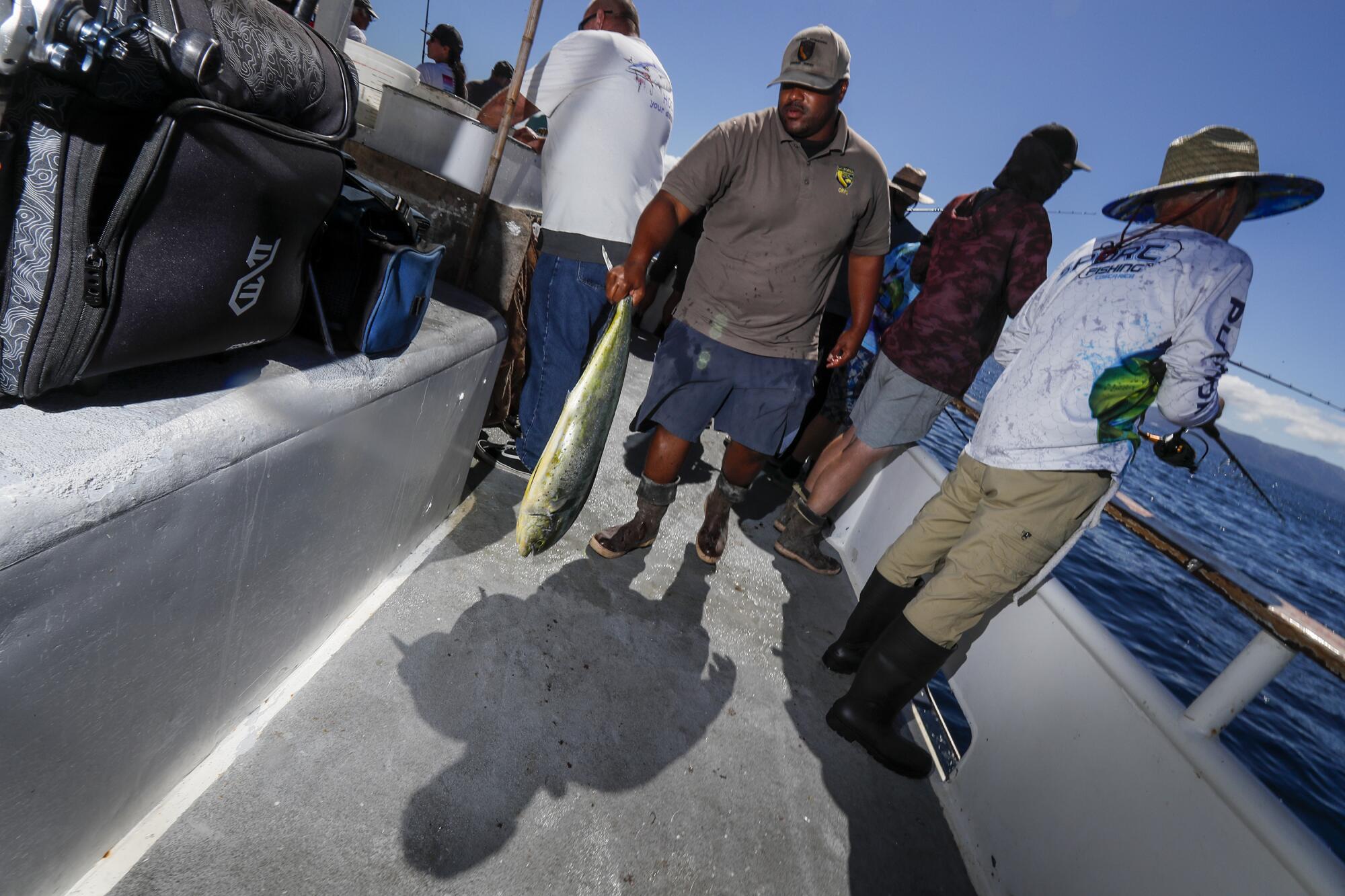
Roaâs fish shone fluorescent before she was speared. By the time the crew filleted her an hour later, most of her scales had oxidized to a dull gray.
By then, the adrenaline had worn off, and the sun and Dramamine had lulled most of the anglers to sleep.
Moore, the barber, splayed on a bench with his T-shirt pulled over his face. Ito dropped his forehead on his arms. Fain nodded against the side of the cockpit.
The final fish count was four.
It wasnât the triumph theyâd dreamed of. But Vega had spent all day bonding with her son. Roa had a new fish to add to the school inked on his arm. Fain got to measure and weigh a dorado for his project.
And Nathan Camarena, 15, hooked the biggest dorado heâd ever fought, his long but ultimately fruitless battle with the fish caught on camera.
âWeâve done a couple Mexico trips to catch it, but to catch it in our own backyard is really special,â his father, Mike Camarena, explained.
A heat wave was predicted the following weekend. The tropical storm in the Pacific, the anglers hoped, would bring more big game.
As the Enterprise headed back to shore, they reassured one another.
Next time would be better.
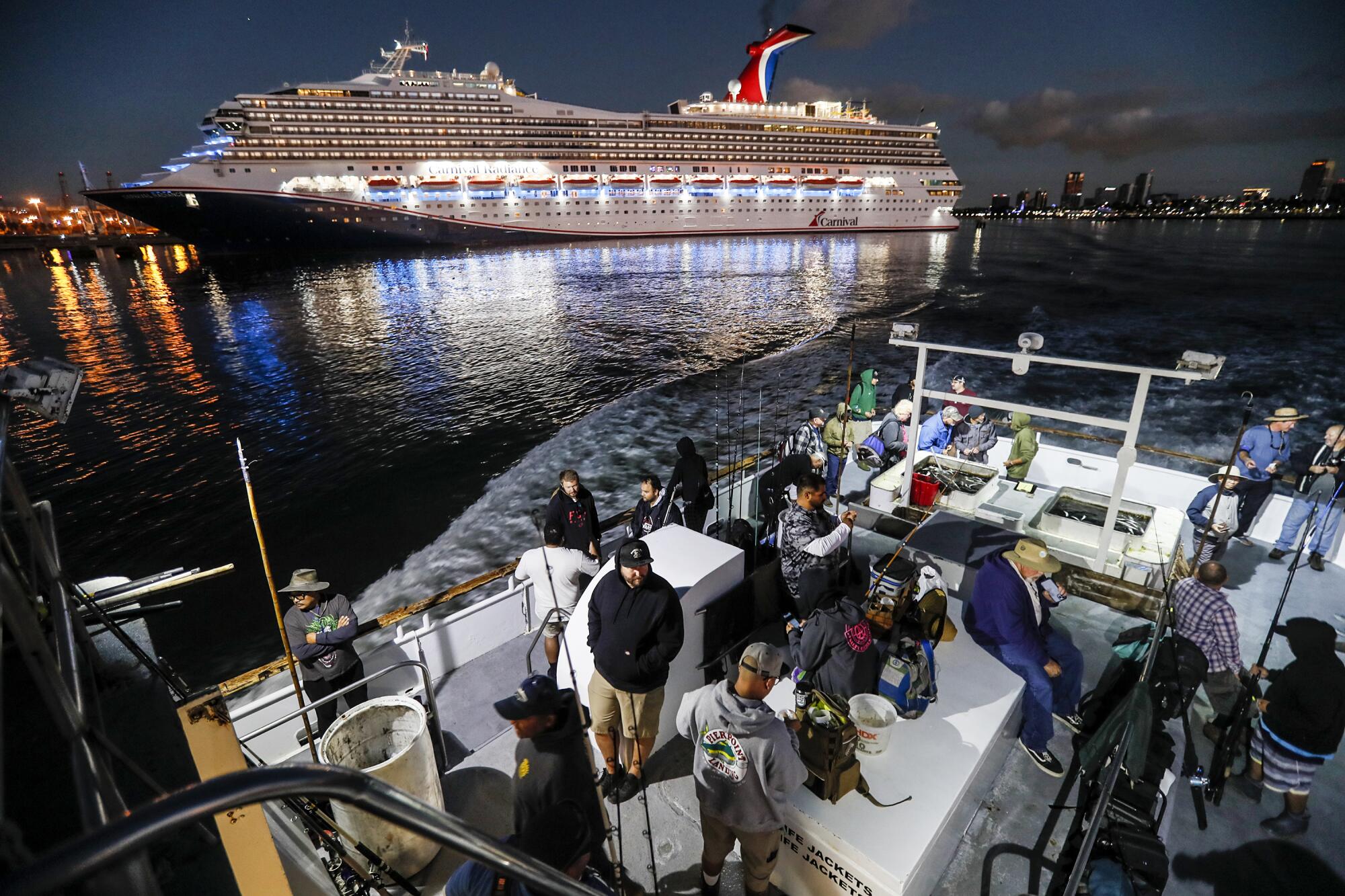
Watch L.A. Times Today at 7 p.m. on Spectrum News 1 on Channel 1 or live stream on the Spectrum News App. Palos Verdes Peninsula and Orange County viewers can watch on Cox Systems on channel 99.
More to Read
Sign up for Essential California
The most important California stories and recommendations in your inbox every morning.
You may occasionally receive promotional content from the Los Angeles Times.

